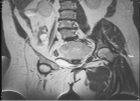Abstract
Research Article
The Effect of Zinc Oxide, Copper, and Silver Nanoparticles Synthesized by the Green Method for Controlling Strawberry Gray Mold Fungus, B. Cinerea Pers
Sareh Hashemi* and Masoud Ahmadzadeh
Published: 10 July, 2023 | Volume 7 - Issue 2 | Pages: 050-065
Gray mold disease, caused by the fungus Botrytis cinerea, causes heavy losses in strawberries. The use of chemical fungicides due to the dangers for humans and the environment has caused attention to reduce their consumption and use biological methods. In this research, the effects of zinc oxide, copper, and silver nanoparticles have been synthesized from an aqueous extract of cloves, and the probiotic bacteria Lactobacillus casei by the green method was investigated on the gray mold disease of strawberries. The results showed that concentrations of 10% of zinc oxide nanoparticles synthesized from aqueous extract of cloves can completely control this pathogen on the culture medium and the fruit. Zinc and silver nanoparticles produced by Lactobacillus casei prevented 93.7% and 81% of fungal growth in the culture medium, respectively. Other treatments did not show a good inhibitory effect on the fungus. All treatments were able to prevent 100% to 50% of fungal growth after 96 hours on strawberries. The investigation of the storage characteristics showed the positive effect of the examined nanoparticles on reducing the rate of change of the physicochemical characteristics of the strawberry fruit tissue. Apparent decay was significantly reduced and samples treated with nanoparticles scored higher in sensory evaluation compared to control. Also, investigating the toxicity of nanoparticles in this experiment on the HepG2 cell line showed that Compared to the control, copper and zinc nanoparticles did not have significant toxicity on cells, but silver nanoparticles led to 25% cell death. This research provides promising results in the field of using nanoparticles for pre-harvest and post-harvest control of plant diseases.
Read Full Article HTML DOI: 10.29328/journal.jpsp.1001106 Cite this Article Read Full Article PDF
Keywords:
Nanoparticle; Strawberry; Botrytis cinerea; Post-harvest control; Biocontrol
References
- Reddy BM., Belkacemi K, Corcuff R, Castaigne F, Arul J. Effect of pre-harvest chitosan sprays on post-harvest infection by Botrytis cinerea and quality of strawberry fruit. Postharvest Biol. Technol. 2000; 20: 39–51.
- Williamson B, Tudzynski B, Tudzynski P, van Kan JA. Botrytis cinerea: the cause of grey mould disease. Mol Plant Pathol. 2007 Sep;8(5):561-80. doi: 10.1111/j.1364-3703.2007.00417.x. PMID: 20507522.
- Shen H, Wei Y, Wang X, Xu C, Shao X. The marine yeast Sporidiobolus pararoseus ZMY-1 has antagonistic properties against Botrytis cinerea in vitro and in strawberry fruit. Postharvest Biol. Technol. 2019; 150: 1–8.
- Abbey JA, Percival D, Abbey L, Asiedu SK, Prithiviraj B, Schilder A. Biofungicides as alternative to synthetic fungicide control of grey mould (Botrytis cinerea)—Prospects and challenges. Biocontrol. Sci. Technol. 2019.. 29: 207–228.
- Epstein L. 2014. Fifty years since Silent Spring. Annual Review of Phytopathology 52(6): 377–402.
- Nazzaro F., Fratianni F., Coppola R. and De Feo V. 2017. Essential oils and antifungal activity. Pharmaceuticals 10(4): 86.
- Singh P., Kim Y.J., Zhang D. and Yang D.C. 2016. Biological synthesis of nanoparticles from plants and microorganisms. Trends Biotechnol. 34(7): 588-599.
- Sivaraj R., Rahman P.K.S.M., Rajiv P., Narendhran S.and Venckatesh R. 2014. Biosynthesis and characterization of Acalypha indica mediated copper oxide nanoparticles and evaluation of its antimicrobial and anticancer activity. Spectrochimica Acta 129: 255258
- Ashrafi Babaganjeh L., Ahangar P., Zarei L. and kouhkan M. 2018. Biofabrication of silver nanoparticles using Lactobacillus casei casei and its efficacy against human pathogens bacteria and cancer cell lines. Med. Sci. 22(89): 99-110.
- Varadarajan R., Hirani B., Prashant C.K., Jacqueline B., Divya N., Jubi M. and Namrata C. 2018. Green synthesis of silvr nanoparticles using aqueous extract of Sytium aromaticum and its cytotoxic and antibacterialactivity. I.J.S.N. 9 (4):328-334
- Markus J., Mathiyalagan R., Kim Y.J., Abbai R., Singh P., Ahn S., Perez Z.E.J., Hurh J. and Yang D.C. 2016. Intracellular synthesis of gold nanoparticles with antioxidant activity by probiotic Lactobacillus kimchicus DCY51T isolated from Korean kimchi, Enzym. Microb. Technol. 95: 85–93.
- Dakhil AS. 2017. Biosynthesis of silver nanoparticle (AgNPs) using Lactobacillus and their effects on oxidative stress biomarkers in rats. J King Saud Univ Sci. 29(4):462-7
- Huang R., Li G.Q., Zhang J., Yang L., Che H.J., Jiang D.H. and Huang H.C. 2011. Control of postharvest Botrytis fruit rot of strawberry by volatile organic compounds of Candida intermedia. Phtopathology 101(7): 859-869
- Abbott W.S. 1925. A method of computing the effectiveness of an insecticide. Journal of Economic Entomolgy 18: 265-267.
- Asghari Marjanlou A., Mostofi Y., Shoaibi Sh. and Mogumi M. 1978. Effect of basil essential oil on control of gray rot and postharvest quality of strawberry, Quarterly Journal of Medicinal Plants 29: 131-139.
- Bradford M.M. 1976. A rapid sensitive method for the quantification of microgram quantities of protein utilising the principle of protein-Dye Binding. Anal Biochem. 72: 248-254.
- Pietrini F. and Massacci A. 1998. Leaf anthocyanin content changes in Zea mays grown at low temperature: significance for the relationship between the quantum yield of PSII and the apparent quantum yield of CO2 assimilation. Photosynthesis Research 58: 213219.
- Rutkowski K. P., Kruczynska D. E. and Zurawicz E. 2006. Quality and shelf life of strawberry cultivars in Poland. Acta Horticulture 708: 329-332.
- Babalar M., Asghari M., Talaei A. and Khosroshahi A. 2007. Effect of pre and postharvest salicylic acid treatment on ethylene production, fungal decay and overall quality of ‘Selva’ strawberry fruit. Food Chemistry 105: 449-453.
- Chikkanna M. M., E. Neelagund S. and K. Rajashekarappa K. 2018. Green synthesis of Zinc oxide nanoparticles (ZnO NPs) and their biological activity. SN Applied Sciences 1:117
- Ahmad S.A., DAS S.S., Khatoon A., Ansari M.T., Afzal M., Hasnain M.S. and Nayak A.K. 2020 Bactericidal activity of silver nanoparticles: A mechanistic review. Materials Science for Energy Technologies 3: 756-769.
- Sirelkhatim A., Mahmud S., Seeni A., Kaus N.H.M., Ann L.C., Bakhori S.K.M, Hasan H. and Mohamad D. 2015. Review on Zinc Oxide Nanoparticles: Antibacterial Activity and Toxicity Mechanism. Nano-Micro Lett. 7(3):219–242.
- Usman M.S., El Zowalaty M.E., Shameli K., Zainuddin N., Salama M and Ibrahim N.A. 2013. Synthesis, characterization, and antimicrobial properties of copper nanoparticles. Int J Nanomedicine 8: 4467–4479
- De Marzi L., Monaco A., De Lapuente J., Ramos D., Borras M., Di Gioacchino M., Santucci S. and Poma A. 2013. Cytotoxicity and Genotoxicity of Ceria Nanoparticles on Different Cell Lines in Vitro. J. Mol. Sci. 14: 3065-3077.
- Gonelimali F.D., Lin J., Miao W., Xuan J., Charles F., Chen M. and Hatab S.R. 2018. Antimicrobial Properties and Mechanism of Action of Some Plant Extracts Against Food Pathogens and Spoilage Microorganisms. Front. Microbiol. 9:1639.
- Wang X., Liu X., Chen J., Han H. and Yuan Z. 2014. Evaluation and mechanism of antifungal effects of carbon nanomaterials in controlling plant fungal pathogen. Carbon 68: 798–806.
- Yudha S.S., Notriawan D., Angasa E., Suharto T.E., Hendri J. and Nishina Y. 2013. Green synthesis of silver nanoparticles using aqueous rinds extract of Brucea javanica (L.) Merr.at ambient temperature, Mater. Lett. 97: 181–183.
- Kouhkan M, Ahangar P, Ashrafi Babaganjeh L. and Allahyari-Devin M. 2020. Biosynthesis of Copper Oxide Nanoparticles Using Lactobacillus casei Casei and its Anticancer and Antibacterial Activities. Current Nanoscience 16: 101-111.
- Chakraborty N., Banerjee J., Chakraborty P., Banerjee A., Chanda S., Ray K., Acharya K. and Sarkar J. 2022. Green synthesis of copper/copper oxide nanoparticles and their applications: a review, Green Chemistry Letters and Reviews 15(1): 187-215.
- Suba S., Vijayakumar S., Vidhya E., Punitha V.N. and Nilavukkarasi M. 2021. Microbial mediated synthesis of ZnO nanoparticles derived from Lactobacillus spp: Characterizations, antimicrobial and biocompatibility efficiencies. Sensors International 2: 100-104
- Akpinar I., Unal M. and Sar T. 2021. Potential antifungal effects of silver nanoparticles (AgNPs) of different sizes against phytopathogenic Fusarium oxysporum sp. radicislycopersici (FORL) strains. SN Appl. Sci. 3: 506.
- Elgorban A.M., El-Samawaty A.R.M., Yassin M.A., Sayed S.R., Adil S.F., Elhindi K.M., Bakri M. and Khan M. 2016. Antifungal silver nanoparticles: synthesis, characterization and biological evaluation. Biotechnology & Biotechnological Equipment 30:1, 56-62.
- Kabir L, Sang WK. and Jin HJ. 2011. Application of silver nanoparticles for the control of Colletotrichum species in vitro and pepper anthracnose disease in field. Mycobiol. 39:194–199
- Brayner R., Ferrari-Iliou R., Brivois N., Djediat S., Benedetti M.F. and Fievet F. 2006. Toxicological impact studies based on Escherichia coli bacteria in ultrafine ZnO nanoparticles colloidal medium. Nano Lett 6(4): 866—70.
- Alvarez-Peral F.J., Zaragoza O., Pedreno Y. and Arguelles J.C. 2002. Protective role of trehalose during severe oxidative stress caused by hydrogen peroxide and the adaptive oxidative stress response in Candida albicans. Microbiology 148(8):2599-2606.
- Lakshmeesha R., Kalagatur N.K., Mudili V., Mohan C.D., Rangappa S., Prasad B.D., Ashwini B.S., Hashem A., Alqarawi A.A., Malik J.A., Allah E.F.A., Gupta V.K., Siddaiah C.N. and Niranjana S.R. 2019. Biofabrication of Zinc Oxide Nanoparticles With Syzygium aromaticum Flower Buds Extract and Finding Its Novel Application in Controlling the Growth and Mycotoxins of Fusarium graminearum. Frontiers in microbiology 10: 1244
- Kalagatur N.K., Mudili V., Kamasani J.R. and Siddaiah C. 2018. Discrete and combined effects of Ylang-Ylang (Cananga odorata) essential oil and gamma irradiation on growth and mycotoxins production by Fusarium graminearum in maize. Food Control. 94:276– 28.
- Delattin N., Cammue B.P. and Thevissen K. 2014. Reactive oxygen species-inducing antifungal agents and their activity against fungal biofilms. Future Med. Chem. 6(1): 77– 90.
- Sellamani M., Kalagatur N. K., Siddaiah C., Mudili V., Krishna K., Natarajan G. and et al. 2016. Antifungal and zearalenone inhibitory activity of Pediococcus pentosaceus isolated from dairy products on Fusarium graminearum. Front. Microbiol. 7: 890.
- Mitra C., Gummadidala P. M., Afshinnia K., Merrifield R.C., Baalousha M., Lead J.R. and et al. 2017. Citrate-coated silver nanoparticles growth-independently inhibit aflatoxin synthesis in Aspergillus parasiticus. Environ. Sci. Technol. 51: 8085–8093.
- Alikhani-Kupaei M., Daraei Garmakhany A. and Adibian M. 2015. Postharvest quality of peach fruit influenced by mucilage-oil coating and microencapsulated oil. Minerva Biotecnologica. 27 (1): 1-9.
- J. F. 1999. Strawberries. CAB. Pub., UK.
- Watkins C. B. 2006. The use of 1-methylcyclopropene (1-MCP) on fruits and vegetable Biotechnology Advances 24: 389-409.
- Hmmam I.; Zaid N., Mamdouh B.; Abdallatif A.; Abd-Elfattah M. and Ali M. 2021. Storage Behavior of “Seddik” Mango Fruit Coated with CMC and Guar Gum-Based Silver Nanoparticles. Horticulturae 7: 44.
- Valverde J. M., Valero D., Martinez-Romero D., Guillen F., Castillo S and Serrano M. 2005. Novel edible coating based on Aloe vera gel to maintain table grape quality and safety. Agricultural and Food Chemistry 53 (20): 7807-7813.
- Ali , Ahmed A., Ahmad Shah S. W., Mehmood T. and Sarfraz Abbasi K. 2020. Effect of silver nanoparticle coatings on physicochemical and nutraceutical properties of loquat during postharvest storage. food processing and preservation 44(10).
- Hernández-Muñoz P., Almenar E., Del Valle V., Velez D. and Gavara R. 2008. Effect of chitosan coating combined with postharvest calcium treatment on strawberry (Fragaria ananassa) quality during refrigerated storage. Food Chemistry 110(2):428–435
- Fischer T. C., Bovy A. G., Martens S. and Rosati C. 2007. Characterization of major enzymes and genes involved in flavonoid and proanthocyanidin biosynthesis during fruit development in strawberry (Fragaria ananassa). Archives of Biochemistry and Biophysics 465: 61-71.
- Tiburcio A.F., Altabella T., Bitrián M. and Alcázar R. 2014. The roles of polyamines during the life span of plants: from development to stress. Planta 240: 1–18.
- Shwab W. 1998. Application of stable isotope ratio analysis explaining the bioformation of 2, 5-dimethyl-4-hydroxy-3(2H)-furanone in plants by biological maillard reaction. Journal of Agricultural and Food Chemistry 46: 2266-2269.
- Pirhayati A., Daraei garmakhany A., Gholami M., Mirzakhani A. and Khalilzadeh Ranjbar G. 2019. Application of Aloe vera Gel Coating Enriched with Golpar Essential Oil on the Shelf Life of Peach Fruit (Prunus persica var Zafarani). Iranian Journal of Nutrition Sciences & Food Technology 13 (4): 75-88
- Martınez-Romero D., Alburquerque N., Valverde J.M., Guillen F., Castillo S., Valero D. and Serrano M. 2005. Postharvest sweet cherry quality and safety maintenance byAloe vera treatments: A new edible coating. Postharvest Biology and Technology 39 (1): 93100.
- López-Vargas ER., Ortega-Ortíz H., Cadenas-Pliego G., De Alba Romenus K., Cabrera de la Fuente M., Benavides-Mendoza A., Juárez-Maldonado A. 2018. Foliar Application of Copper Nanoparticles Increases the Fruit Quality and the Content of Bioactive Compounds in Tomatoes. Applied Sciences 8(7):1020.
- OdetayoT., Tesfay and Ziphorah Ngobese N. 2021. Nanotechnology-enhanced edible coating application on climacteric fruits. Food Sci Nutr.10(7): 2149-2167.
Figures:
Similar Articles
-
Impact of Calcium Phosphate Nanoparticles on Rice PlantHrishikesh Upadhyaya*,Lutfa Begum,Bishal Dey,P K Nath,S K Panda. Impact of Calcium Phosphate Nanoparticles on Rice Plant. . 2017 doi: 10.29328/journal.jpsp.1001001; 1: 001-010
-
Physiological impact of Zinc nanoparticle on germination of rice (Oryza sativa L) seedUpadhyaya H*,Roy H,Shome S,Tewari S,Bhattacharya MK,Panda SK. Physiological impact of Zinc nanoparticle on germination of rice (Oryza sativa L) seed . . 2017 doi: 10.29328/journal.jpsp.1001008; 1: 062-070
-
Control of phytopathogenic microorganisms of post-harvest in tomato (Lycopersicon esculentum Mill.) with the use of citrus extractRueda Puente Edgar Omar*,Ruíz-Alvarado Cristina,Juan José Reyes-Pérez,Hernández-Montiel Luis Guillermo,Amador Bernardo. Control of phytopathogenic microorganisms of post-harvest in tomato (Lycopersicon esculentum Mill.) with the use of citrus extract. . 2018 doi: 10.29328/journal.jpsp.1001018; 2: 037-043
-
Isolation and biochemical characterization of Plant Growth Promoting (PGP) bacteria colonizing the rhizosphere of Tef crop during the seedling stageZerihun Tsegaye*,Birhanu Gizaw,Genene Tefera,Adey Feleke,Solomon Chaniyalew,Tesfaye Alemu,Fasil Assefa . Isolation and biochemical characterization of Plant Growth Promoting (PGP) bacteria colonizing the rhizosphere of Tef crop during the seedling stage. . 2019 doi: 10.29328/journal.jpsp.1001027; 3: 013-027
-
Non-chemical control of Armillaria mellea infection of Prunus persicaJim Downer*,Ben Faber. Non-chemical control of Armillaria mellea infection of Prunus persica. . 2019 doi: 10.29328/journal.jpsp.1001031; 3: 050-055
-
An overview of the developments of nanotechnology and heterogeneous photocatalysis in the presence of metal nanoparticlesTigabu Bekele Mekonnen*. An overview of the developments of nanotechnology and heterogeneous photocatalysis in the presence of metal nanoparticles. . 2022 doi: 10.29328/journal.jpsp.1001083; 6: 103-114
-
Photocatalytic degradation of organic pollutants in the presence of selected transition metal nanoparticles: reviewTigabu Bekele Mekonnen*. Photocatalytic degradation of organic pollutants in the presence of selected transition metal nanoparticles: review. . 2022 doi: 10.29328/journal.jpsp.1001084; 6: 115-125
-
Planococcus citri (Risso) (Hemiptera: Coccomorpha: Pseudococcidae) on Strawbery (Fragaria vesca L., Rosaceae) in Silifke, Mersin, TurkeyNaim Öztürk,Adalet Hazir,M Bora Kaydan*. Planococcus citri (Risso) (Hemiptera: Coccomorpha: Pseudococcidae) on Strawbery (Fragaria vesca L., Rosaceae) in Silifke, Mersin, Turkey. . 2022 doi: 10.29328/journal.jpsp.1001094; 6: 170-172
-
The Effect of Zinc Oxide, Copper, and Silver Nanoparticles Synthesized by the Green Method for Controlling Strawberry Gray Mold Fungus, B. Cinerea PersSareh Hashemi*, Masoud Ahmadzadeh. The Effect of Zinc Oxide, Copper, and Silver Nanoparticles Synthesized by the Green Method for Controlling Strawberry Gray Mold Fungus, B. Cinerea Pers. . 2023 doi: 10.29328/journal.jpsp.1001106; 7: 050-065
-
Nitrogen supply effect on lettuce response to Botrytis cinerea and Sclerotinia minorChayma Ouhibi*, Majd Darwish, Laurent Urban, Mokhtar Lachaal, Jawad Aarrouf. Nitrogen supply effect on lettuce response to Botrytis cinerea and Sclerotinia minor. . 2023 doi: 10.29328/journal.jpsp.1001116; 7: 118-123.
Recently Viewed
-
Budesonide – Oral Galenic Formulations for Crohn DiseaseLuisetto M, Mashori GR, Cabianca L, Latyshev OYU. Budesonide – Oral Galenic Formulations for Crohn Disease. Ann Clin Gastroenterol Hepatol. 2024: doi: 10.29328/journal.acgh.1001048; 8: 028-033
-
Drug Rehabilitation Centre-based Survey on Drug Dependence in District Shimla Himachal PradeshKanishka Saini,Palak Sharma,Bhawna Sharma*,Atul Kumar Dubey,Muskan Bhatnoo,Prajkta Thakur,Vanshika Chandel,Ritika Sinha. Drug Rehabilitation Centre-based Survey on Drug Dependence in District Shimla Himachal Pradesh. J Addict Ther Res. 2025: doi: 10.29328/journal.jatr.1001032; 9: 001-006
-
A Rare Case of Uvulitis Following Endotracheal Intubation Using C- Mac Videolaryngoscope and How To Avoid ItKiran Kuruvilla George, Jini Chirackel Thomas, Krishnan B Sivaram, Krishna Prasad T*. A Rare Case of Uvulitis Following Endotracheal Intubation Using C- Mac Videolaryngoscope and How To Avoid It. Arch Pathol Clin Res. 2024: doi: 10.29328/journal.apcr.1001043; 8: 016-020
-
Gossypiboma due to a retained surgical sponge following abdominal hysterectomy, complicated by intestinal migration and small bowel obstruction- A Case ReportVivek Agrawal,Praroop Gupta*. Gossypiboma due to a retained surgical sponge following abdominal hysterectomy, complicated by intestinal migration and small bowel obstruction- A Case Report. Arch Surg Clin Res. 2018: doi: 10.29328/journal.ascr.1001017; 2: 015-017
-
Laparoscopic Cholecystectomy: Challenges faced by beginners our perspectiveKunal Chowdhary,Gurinder Kaur,Kapil Sindhu,Muzzafar Zaman*,Aliya Shah,Rohit Dang,Ashish Kumar,Jose John Maiakal,Ashutosh Bawa. Laparoscopic Cholecystectomy: Challenges faced by beginners our perspective. Arch Surg Clin Res. 2018: doi: 10.29328/journal.ascr.1001018; 2: 018-024
Most Viewed
-
Evaluation of Biostimulants Based on Recovered Protein Hydrolysates from Animal By-products as Plant Growth EnhancersH Pérez-Aguilar*, M Lacruz-Asaro, F Arán-Ais. Evaluation of Biostimulants Based on Recovered Protein Hydrolysates from Animal By-products as Plant Growth Enhancers. J Plant Sci Phytopathol. 2023 doi: 10.29328/journal.jpsp.1001104; 7: 042-047
-
Sinonasal Myxoma Extending into the Orbit in a 4-Year Old: A Case PresentationJulian A Purrinos*, Ramzi Younis. Sinonasal Myxoma Extending into the Orbit in a 4-Year Old: A Case Presentation. Arch Case Rep. 2024 doi: 10.29328/journal.acr.1001099; 8: 075-077
-
Feasibility study of magnetic sensing for detecting single-neuron action potentialsDenis Tonini,Kai Wu,Renata Saha,Jian-Ping Wang*. Feasibility study of magnetic sensing for detecting single-neuron action potentials. Ann Biomed Sci Eng. 2022 doi: 10.29328/journal.abse.1001018; 6: 019-029
-
Pediatric Dysgerminoma: Unveiling a Rare Ovarian TumorFaten Limaiem*, Khalil Saffar, Ahmed Halouani. Pediatric Dysgerminoma: Unveiling a Rare Ovarian Tumor. Arch Case Rep. 2024 doi: 10.29328/journal.acr.1001087; 8: 010-013
-
Physical activity can change the physiological and psychological circumstances during COVID-19 pandemic: A narrative reviewKhashayar Maroufi*. Physical activity can change the physiological and psychological circumstances during COVID-19 pandemic: A narrative review. J Sports Med Ther. 2021 doi: 10.29328/journal.jsmt.1001051; 6: 001-007

HSPI: We're glad you're here. Please click "create a new Query" if you are a new visitor to our website and need further information from us.
If you are already a member of our network and need to keep track of any developments regarding a question you have already submitted, click "take me to my Query."


















































































































































